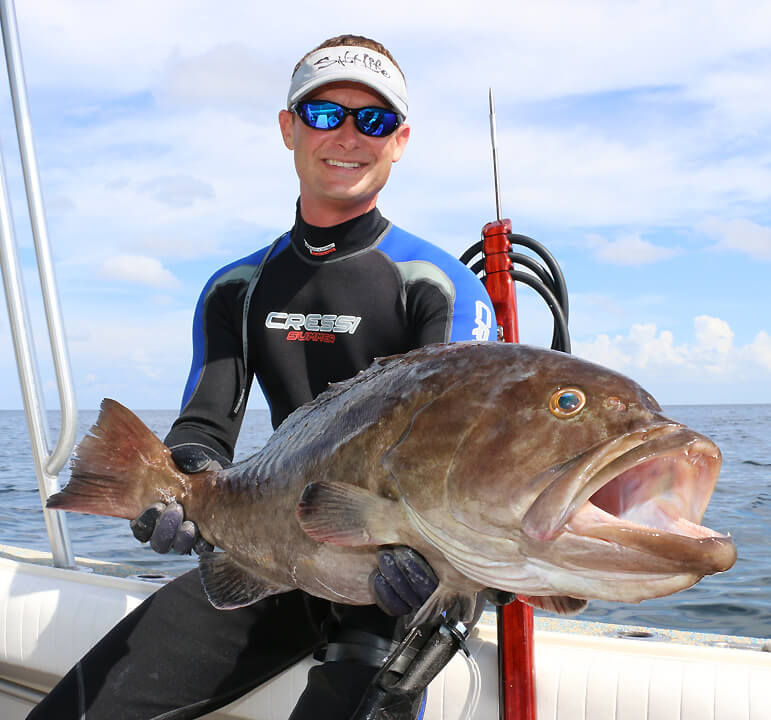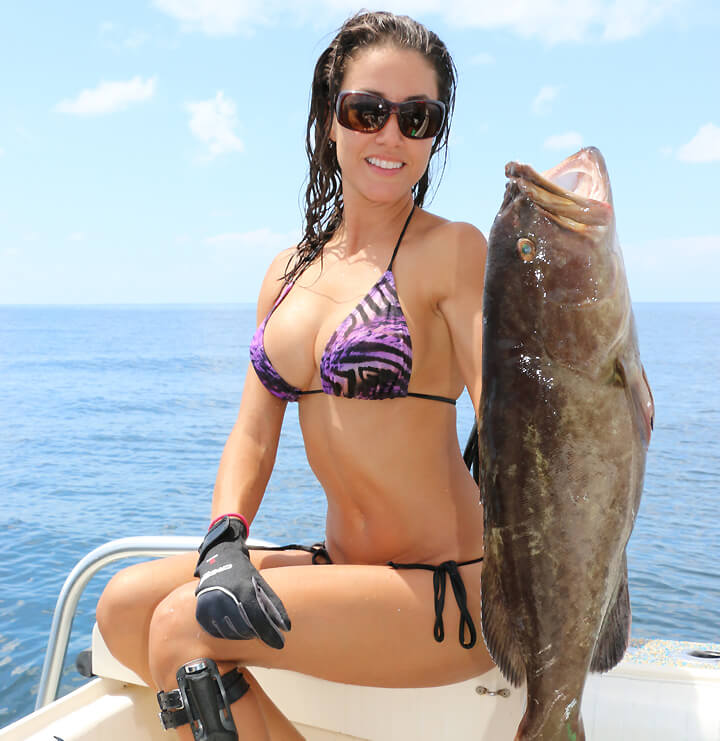
Being a charter fisherman in Venice, Louisiana, everyone seems to want tuna, tuna, tuna, but there are fish out there that are much easier and (in most people’s opinion) tastier to eat. Gag, scamp, warsaw, snowy, and many other groupers are caught year round in the Gulf. Many people have eaten grouper in restaurants, but very few fishermen have a clue how to catch these fish. With the right tackle and the right conditions, even the most novice angler can put several bags of tasty filets in their freezer.
First off, I advise someone serious about catching grouper to set up a charter with a reputable captain and go grouper fishing. Rough seas or strong current are not the ideal conditions to do this type of fishing, so be sure to ask what the seas have been doing. Going with a good captain will give you a hands on experience for rigging and fighting these brutes of the deep, there is a method to this madness. Fishing rods, lines, and reels will break if you find a rig with big grouper on it, so get on a boat that has the right stuff.
The location is the key for finding grouper, anything less than one hundred foot of water usually wields undersize grouper, but after the hundred foot mark, the keepers seem to stay constant. Regardless of where you are fishing (Main Pass, West Delta, South Pass, East Bay, Grand Isle…) finding a rig with the right depth will greatly increase your chance for grouper.
Approach to the rigs varies according to the conditions. A slack current (the best kind) will allow you to tie up on the down current and drop close to the rig. If there is any current, your best bet is to position your boat on the up current side of the rig. The rate of the current should dictate the position of your boat. If the current is moving slow get up current of the rig about 50 feet and hold the boat. One trick we do regardless of the current is to get up current and let your boat fall back to the rig (all the while keeping a tight line on the bottom) and hold your boat if, and when, the bites start. I know it sounds elementary but if you think about where your bait is going to be with a strong current. If you are tied up down current of the rig, and it is moving fast, your bait will be so far away from the fish you will be just “burning day light”. The same goes for the up current side but with a costly effect. If you are too close to the rig, on the up current side dropping down baits, the bait will be in the rig. If a grouper takes a bait that is inside the rig, it is as good as gone, regardless of the size of the fish.
Every charter fisherman has their grouper rod(s); some are built for finesse, while others are built for strength. Some popular rigs are 10/0 Penn Senator reels rigged with 150lb to 200lb test mono. These reels are usually mounted to stout, short stand up rods with little or no play in them. The idea here is to winch the fish out of the rig with little or no mercy. Another popular reel seen around the docks is the new Shimano Tekota 800 rigged with 250lb power pro, rigged to a 5-foot Penn stand up rod. The purpose for this rig allows you to “deep drop” in rigs 300ft and over all the while being able to feel the bite. Both of the above-mentioned rigs are not cheap, but they are very durable, and can easily handle groupers 50lbs and up.
Deep water grouper fishing means heavy weight and heavy leader. Even with the slightest current, you will need a lot of lead to get you to the honey hole. It is not unusual to see charter captains using 24oz of lead on a relatively calm day. When you cover that much distance to the bottom even a small variable in current will affect the presentation of your bait. If you are going to do this type of fishing bring a large number of these heavy weights on your trip. You will break fish off, and you will get snagged on the rig, it will happen, bring extras.
Leader material is a must for this type of fishing. More often than not you will be dragging grouper out of a rig, and the leader will be taking the majority of the abuse. We do not use anything less than 130lb but some captains will use 400lb. Yes, 400lb test is stronger but try to break it off a rig without losing $100 worth of power pro (to each his own).
A large hook is a must to keep away smaller fish (reef fish, triggers, snappers etc). A big 12 to 16/o circle hook will ensure that anything that can grab that hook is a keeper. Also, be sure to buy quality hooks, a cheap hook can and will straighten out.
Bait for grouper varies coast to coast, but a constant in this equation is live bait. Whether it is hard tails, mullet, grunts, goggle eye, sardines or mackerel, live bait gets the bites when nothing else will. Anything kicking gets big grouper biting, but I think hooking the bait through the mouth will help your cause. Dropping a bait 250 to 350ft of water will cause the bait to cartwheel, a mouth hooked bait seems to go straight down. Other baits for grouper could be bonito slabs, butterflied dead bait, squid, whole pogey, or even eel.
Bringing it all together is pretty easy, it is basically the following: the main line goes through the cannon ball weight tied to a big game swivel tied to the leader snelled to the circle hook. The finished product should look just like a huge Carolina rig.
With the right tackle and the right approach, you can very easily catch this hard fighting tasty fish with a little finesse and a lot of muscle. Trust me the end justifies the means.
Captain Sonny Schindler
Shore Thing Fishing Charters
Bay St Louis, MS
228-342-2295
www.shorethingcharters.com
